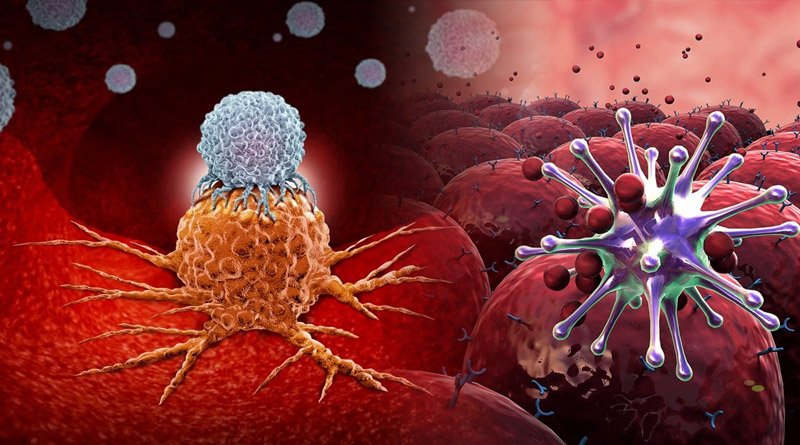Ovarian cancer, also known as “whispering cancer,” develops in the ovaries, which are found on either side of the uterus.

Ovarian cancer, also known as “whispering cancer,” develops in the ovaries, which are found on either side of the uterus. The ovaries are part of a woman’s reproductive system, which includes the following components:
- vulva
- vagina
- womb or uterus (which includes the cervix)
- fallopian tubes
- ovaries
There are two ovaries, one on each side of the body. The ovaries produce an egg each month in women of childbearing age, as well as hormones (estrogen and progesterone). These hormones are produced by the ovaries during a woman’s reproductive years.
Hormones regulate the menstrual cycle. As you age and approach menopause, your ovaries produce fewer and fewer of these hormones, and your periods eventually stop. Ovarian hormones also aid in the protection of the heart and bones.
Maintaining brain and immune system health is also important. The ovaries produce a limited quantity of testosterone, which is a masculine hormone. It is unclear what role testosterone plays in women. However, physicians believe it helps with muscle and bone strength. It may also play a role in a woman’s sexual drive.
Figure 1: Ovarian cancer
Ovarian cancer (OC) is the deadliest endometrial malignancy, the seventh most prevalent type of malignant tumour in women, and the eighth major cause of mortality in women around the world, with 3,13,959 new cases and 2,07,252 fatal cases in 2020.
It also kills more women than any other female reproductive system cancer. This is mostly due to its “silent” symptoms, which is why it is also known as “whispering cancer.”
Based on the tissues where they are located, ovarian cancers are classified into three major types with various subclasses.
The most frequent type of ovarian cancer, the whispering cancer, is epithelial cell tumours, which begin in the cells that cover the ovaries; germ cell tumours form in the cells responsible for egg development in the ovary; and stromal cell tumours begin in the cells that produce female hormones in the ovary.
The following are typical risk factors for ovarian cancer: age of more than 55 years; having undergone hormone replacement therapy; infertility or the use of fertility treatments; family history with breast or ovarian cancer; nicotine exposure; and obesity.
The majority of ovarian cancer cases are diagnosed at a later stage when the tumour has already progressed to the upper abdominal organs and peritoneum, and the five-year survival rate for patients diagnosed at stage III or IV is reported to be below 25%.
The conventional treatment approach for this condition involves cytoreductive surgery, followed by radiotherapy or chemotherapy. Though various chemotherapy phases and high doses of cytotoxic drugs are applied to destroy cancer cells, they are lethal to nearby healthy or normal cells.
These chemotherapeutic drugs have major side effects such as myelosuppression, cardiotoxicity, gastrointestinal problems, infection, fatigue, hair loss, poor appetite, alopecia complications, stress, early menopause, and excessive sweeting.
Furthermore, resistance to chemotherapy is affected by DNA damage repair, overexpression of P-glycoprotein, mutations in topoisomerase II, low solubility and bioavailability of chemotherapy drugs, and the immune escape of cancer cells, which constrain the drugs therapeutic impacts on cancerous cells.
Aggressive production, assortment, and cancer persistence with chemotherapeutic drugs are extreme challenges in ovarian cancer treatment.
Due to the current limitations of the established treatments for ovarian cancer, there is an urgent need to develop new therapies to improve overall survival. In recent years, there has been great promise in the development of antiviral viruses for the treatment of a wide range of cancers, including ovarian cancer, the whispering cancer.
For the purpose of identifying a virus that is deliberately infecting and attacking tumour cells, which spreads to other cancer cells, as well as resulting in an ongoing cycle of anticancer activities, the term “oncolytic viruses“ has been frequently used. Different cellular mechanisms, such as apoptosis, autophagia, pyroptosis, and necrosis, are responsible for the lysis of cells after infection with a viral virus, depending on its use and dose.
As a result, the cell death of targeted cancers is often immunogenic, releasing cancer-specific antigens that lead to systemic anti-tumour immune responses.
These oncolytic viruses contain RNA and DNA in their protein capsid as a genome. The selected RNA viruses usually show intrinsic tumour cell selectivity, whereas DNA viruses are engineered to have tumour selectivity.
Figure 2: Mechanism of the Oncolytic Virus
Oncolytic viruses can be chosen to target cellular surface receptors that are abnormally expressed on tumour cells, either by naturally targeting these receptors or by designing them for the treatment of tumours.
Moreover, an OV can be used to manipulate aberrant signalling pathways that are often found in cancer cells. In order to improve their selectivity, potency, and adverse reaction profile, a number of OVs have also been engineered for receptor-specific tumour targeting, such as CD47 or CD44 receptors that are highly expressed on tumour cells.
Examples of these viruses are adenoviruses, herpes simplex virus, measles virus, vaccinia virus, vesicular stomatitis, reovirus, and many more, but adenovirus and herpes simplex viruses are the two most common families used for the treatment of cancer, and their clinical trials are under investigation and it is hoped they will be used as a therapeutic regime in the near future.
This article is authored by Fareeha Iqbal (PhD Scholar), Atta-Ur-Rahman School of Applied Biosciences (ASAB), National University of Sciences and Technology (NUST), Islamabad.
